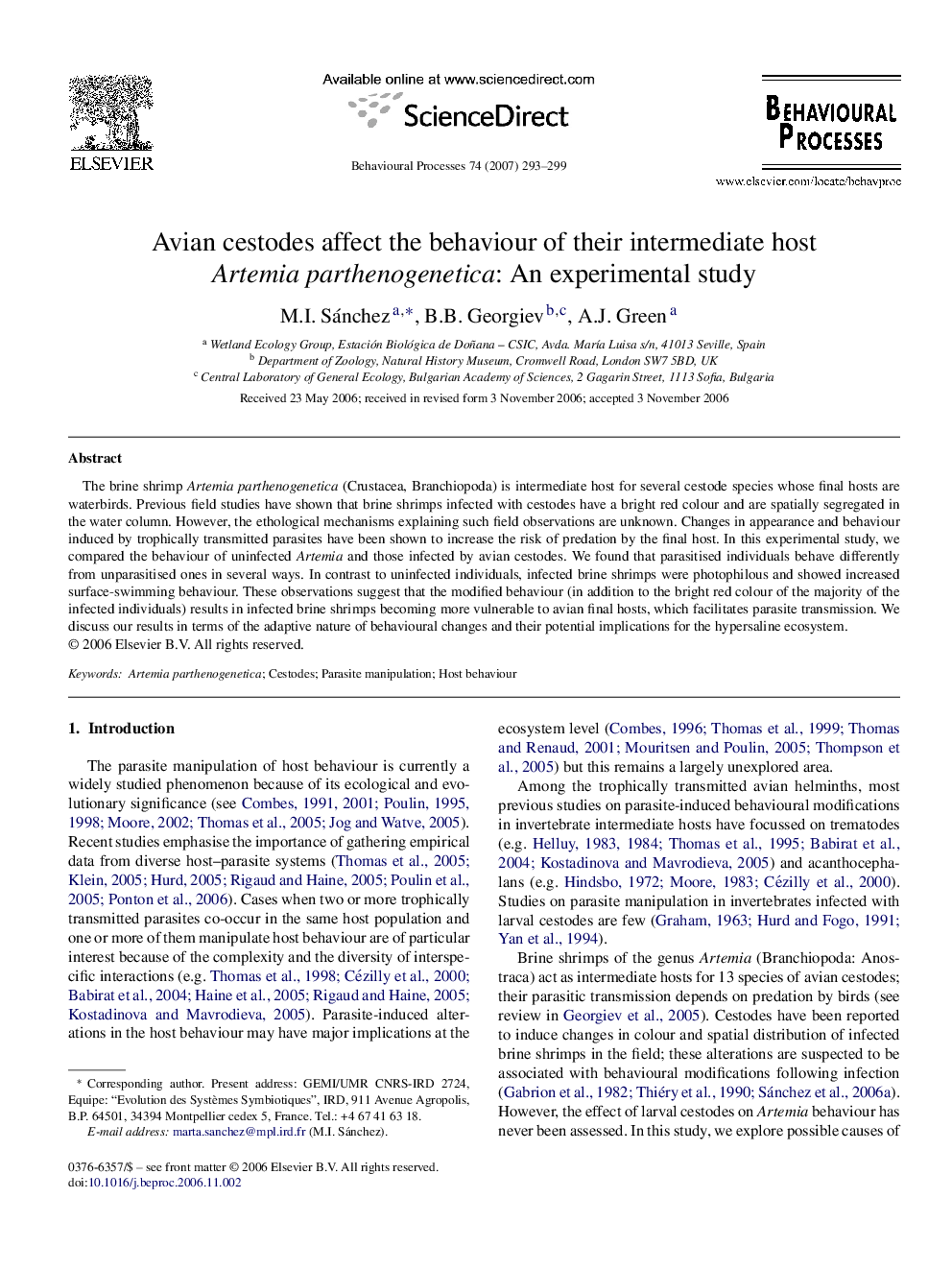| Article ID | Journal | Published Year | Pages | File Type |
|---|---|---|---|---|
| 2428063 | Behavioural Processes | 2007 | 7 Pages |
The brine shrimp Artemia parthenogenetica (Crustacea, Branchiopoda) is intermediate host for several cestode species whose final hosts are waterbirds. Previous field studies have shown that brine shrimps infected with cestodes have a bright red colour and are spatially segregated in the water column. However, the ethological mechanisms explaining such field observations are unknown. Changes in appearance and behaviour induced by trophically transmitted parasites have been shown to increase the risk of predation by the final host. In this experimental study, we compared the behaviour of uninfected Artemia and those infected by avian cestodes. We found that parasitised individuals behave differently from unparasitised ones in several ways. In contrast to uninfected individuals, infected brine shrimps were photophilous and showed increased surface-swimming behaviour. These observations suggest that the modified behaviour (in addition to the bright red colour of the majority of the infected individuals) results in infected brine shrimps becoming more vulnerable to avian final hosts, which facilitates parasite transmission. We discuss our results in terms of the adaptive nature of behavioural changes and their potential implications for the hypersaline ecosystem.
